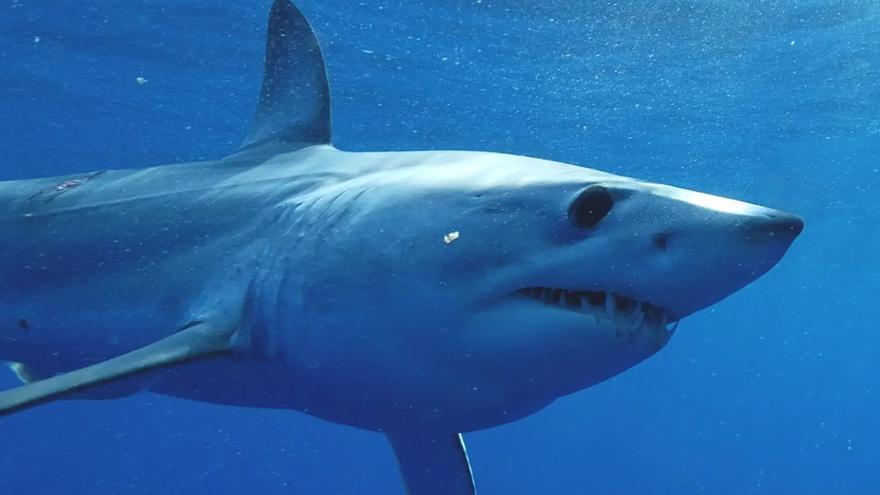An extraordinary encounter in Tenerife waters
What seemed like just another day’s sailing in the crystal clear waters of Tenerife turned into a scene impossible to forget. A sailor captured with his mobile phone the exact moment when a mako shark, the fastest shark in the ocean, devoured a pilot whale floating lifeless. The video, which has spread like wildfire on social media and messaging apps, has generated thousands of comments, ranging from admiration to shock.
The footage vividly shows the shark attacking the carcass of the cetacean, also known as a pilot whale, in waters close to the coast. The images are so clear and so close that it is hard to believe that this is a natural occurrence and not a professional documentary. “It’s like being inside the ocean,” many users commented on social media.
A rare natural phenomenon sparks scientific curiosity
The video has triggered the curiosity of scientists, experts and the curious alike. Is it normal for a mako shark to attack a pilot whale? What is the ocean telling us? Although both animals share a habitat in the Atlantic waters around the Canary Islands, attacks between mako sharks and pilot whales are not frequent. This is precisely what has given the video its exceptional character.
The mako, known for its speed and power, usually feeds on large fish, but can seize easy prey if it finds it within reach. All indications are that the pilot whale was already dead before the attack. There is no sign of fight or flight, just the shark feeding. Natural behaviour, yes, but unusual to see this clearly.
Public reaction reveals deep connection to marine life
The networks have been divided. On the one hand, those who defend that “it is the law of the strongest”, a simple scene in the food chain. On the other, those who feel moved by the pilot whale, one of the most beloved marine mammals of the Canary Islands. “Seeing it like this hurts, we have seen it so many times on excursions…”, writes a user from Tenerife.
This emotional response makes sense. The pilot whale is one of the stars of whale watching, an emblematic tourist activity on the island that draws thousands of visitors each year. Its figure represents the connection that Tenerife locals and visitors feel with the sea, making this encounter particularly poignant for those who have experienced these magnificent creatures up close during marine excursions.
Meet the ocean’s most impressive predators
The Isurus oxyrinchus is the fastest shark in the world. It can exceed 70 km/h in short bursts, making it a formidable hunter. Despite its power, it is classified as a vulnerable species by the IUCN, mainly due to overfishing. For marine wildlife enthusiasts visiting Tenerife, spotting a mako shark represents one of the ocean’s most thrilling encounters, though they are rarely seen so close to shore.
Globicephala macrorhynchus is part of stable groups and is very common in the waters southwest of Tenerife. Its intelligence, social structure and closeness make it especially loved by whale watchers and marine biologists alike. It is a protected species according to the Spanish Catalogue of Threatened Species, and visitors to Tenerife can regularly observe these remarkable creatures during organized whale watching tours.
Environmental changes may influence marine behavior
Although such scenes are not impossible, they could be becoming more frequent due to environmental factors. Warming waters, overfishing and marine noise alter the balance of the ecosystem. Animals like the mako could adapt with new behaviours in order to survive, potentially creating more opportunities for visitors and researchers to witness these extraordinary natural interactions in the waters surrounding the Canary Islands.

